
This 4th edition published in 2009. Reprinted 2010.
Published by Marshall Cavendish Corporation
99 White Plains Road
Tarrytown NY 10591-9001
www.marshallcavendish.us
First published in 2001 by Times Media Pte Ltd; 2nd edition published in 2003; 3rd edition published in 2006.
2009 Marshall Cavendish International (Asia) Private Limited
All rights reserved
No part of this publication may be reproduced, stored in a retrieval system or transmitted, in any form or by any means, electronic, mechanical, photocopying, recording or otherwise, without the prior permission of the copyright owner. Request for permission should be addressed to the Publisher, Marshall Cavendish International (Asia) Private Limited, 1 New Industrial Road, Singapore 536196. Tel: (65) 6213 9300, fax: (65) 6285 4871. E-mail:
The publisher makes no representation or warranties with respect to the contents of this book, and specifically disclaims any implied warranties or merchantability or fitness for any particular purpose, and shall in no events be liable for any loss of profit or any other commercial damage, including but not limited to special, incidental, consequential, or other damages.
Other Marshall Cavendish Offices:
Marshall Cavendish International (Asia) Pte Ltd. 1 New Industrial Road, Singapore 536196  Marshall Cavendish International. PO Box 65829, London EC1P 1NY, UK
Marshall Cavendish International. PO Box 65829, London EC1P 1NY, UK  Marshall Cavendish International (Thailand) Co Ltd. 253 Asoke, 12th Flr, Sukhumvit 21 Road, Klongtoey Nua, Wattana, Bangkok 10110, Thailand
Marshall Cavendish International (Thailand) Co Ltd. 253 Asoke, 12th Flr, Sukhumvit 21 Road, Klongtoey Nua, Wattana, Bangkok 10110, Thailand  Marshall Cavendish (Malaysia) Sdn Bhd, Times Subang, Lot 46, Subang Hi-Tech Industrial Park, Batu Tiga, 40000 Shah Alam, Selangor Darul Ehsan, Malaysia
Marshall Cavendish (Malaysia) Sdn Bhd, Times Subang, Lot 46, Subang Hi-Tech Industrial Park, Batu Tiga, 40000 Shah Alam, Selangor Darul Ehsan, Malaysia
Marshall Cavendish is a trademark of Times Publishing Limited
eISBN: 978 981 4435 92 5
Please contact the publisher for the Library of Congress catalogue number
Printed in Singapore by Times Printers Pte Ltd
Photo Credits:
All black and white photos from the author except page 121 (Ceara Conway). All colour images from Photolibrary.  Cover photo: Photolibrary
Cover photo: Photolibrary
All illustrations by TRIGG
ABOUT THE SERIES
Culture shock is a state of disorientation that can come over anyone who has been thrust into unknown surroundings, away from ones comfort zone. CultureShock! is a series of trusted and reputed guides which has, for decades, been helping expatriates and long-term visitors to cushion the impact of culture shock whenever they move to a new country.
Written by people who have lived in the country and experienced culture shock themselves, the authors share all the information necessary for anyone to cope with these feelings of disorientation more effectively. The guides are written in a style that is easy to read and covers a range of topics that will arm readers with enough advice, hints and tips to make their lives as normal as possible again.
Each book is structured in the same manner. It begins with the first impressions that visitors will have of that city or country. To understand a culture, one must first understand the peoplewhere they came from, who they are, the values and traditions they live by, as well as their customs and etiquette. This is covered in the first half of the book.
Then on with the practical aspectshow to settle in with the greatest of ease. Authors walk readers through topics such as how to find accommodation, get the utilities and telecommunications up and running, enrol the children in school and keep in the pink of health. But thats not all. Once the essentials are out of the way, venture out and try the food, enjoy more of the culture and travel to other areas. Then be immersed in the language of the country before discovering more about the business side of things.
To round off, snippets of basic information are offered before readers are tested on customs and etiquette of the country. Useful words and phrases, a comprehensive resource guide and list of books for further research are also included for easy reference.
INTRODUCTION
Land of polluted river
Bloodshot eyes and sodden liver
Land of my heart forever
Scotland the brave
Billy Connolly quoted in The Big Yin (1994) by Jonathan Margolis
ANOTHER BOOK ON SCOTLAND...
Welcome to yet another book on Scotland. So much has been written and rewritten on Scotland, Scottish life, its history and traditions that you might think that any author today would throw up his hands and say, Enough is enough! Yet somehow, Scotland continues to inspire fascination and love amongst visitors and inhabitants alike. Sir Walter Scotts land of brown heath and shaggy wood, land of the mountain and the flood lives on in the hearts and imaginations of all those who go there.
This is a fine moment to take another look at a proud and increasingly confident people. After some three hundred years of political union with England, the Scots voted to have their own parliament in 1997.
The new millennium brought political devolution to Scotland with an elected assembly sitting in Edinburgh. Greater self-determination has inspired fresh hope and excitement in the country and its people
Scotland may remain part of Great Britain (England, Scotland, Wales and Northern Ireland), but it has always been a country apart. When you travel up from London on the train to Edinburgh or Glasgow, you dont need signposts to tell you that you have arrived in a different environment. In England, the countryside seems tempered and polished by time, the landscape neatly clipped and contained by centuries of overcrowding, over-farming and zealous gardening. In contrast, Scotlands rifts, faults and mountains seem to have been left in constant turmoil and revolt. The land and its people are truly different and in many ways seem rawer, younger and less cynical.
Some 80 per cent of the population live and work in the Central Belt, a broad swathe of land that takes in Edinburgh, Glasgow and the 113 km (70 miles) or so in between. These two principal cities couldnt be more different. Edinburghs stone facades, spires and gothic alleyways have an elegant if austere charm about them. Glasgow, one of the great cities of the colonial empire, weaves Old World grandeur into a modern day metropolis. The weather also distinguishes Scotlands twin urban centres. Edinburgh is airier, blown as it is by a cold wind from the east, while Glasgow catches the rain that sweeps in from the west.
While the cities and towns of the densely populated southern part of Scotland are important and wonderful in their different ways, it is the character of the land itself that has such a profound effect on people. Southern Scotland is an undulating territory of hills and river valleys separated by the cold waters of the Solway Firth. Once the centre of a strong textile industry, young people in the Borders, Dumfries and Galloway are now looking increasingly to the big cities for work.
Travel east out of Edinburgh and youre in the Kingdom of Fife, a peninsula of land running into the breakwaters of the North Sea with the town of St Andrews at its coastal tip. Although the landscape consists of flat and repetitive farmland compared to the Highlands, it still holds its own charm. Perhaps its the string of old fishing villages that run all the way up to Wick in the north, a reminder of the days when the herring was king.
Next page
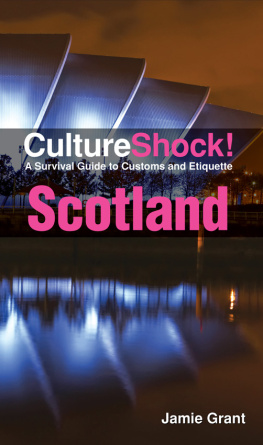


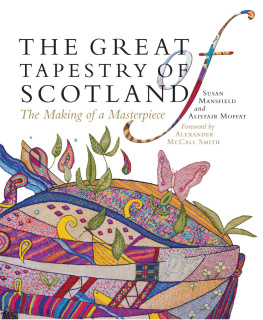
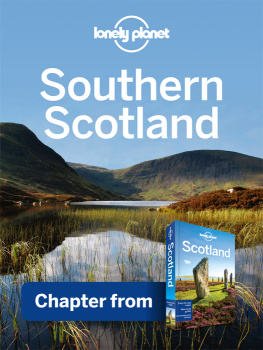

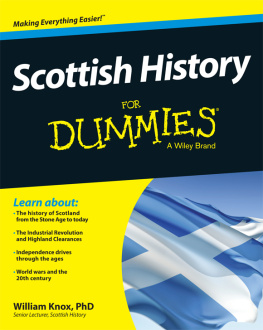

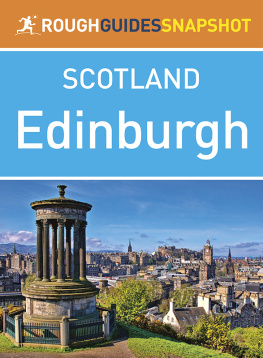
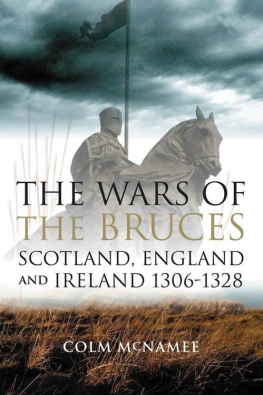


 Marshall Cavendish International. PO Box 65829, London EC1P 1NY, UK
Marshall Cavendish International. PO Box 65829, London EC1P 1NY, UK